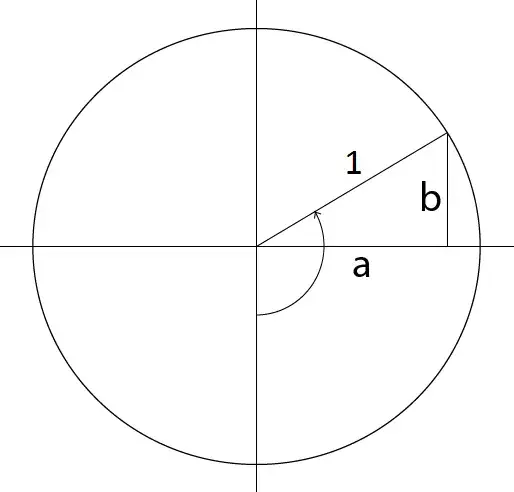So I need to find the surface area of this solid defined as: $x^2+y^2+z^2=1$ where $z\geq \frac{1}{2}$
I tried to do the following:
$x^2+y^2+z^2 \geq \frac{1}{2}$ into $z=\sqrt{1-x^2-y^2}$
$Fx(x,y)= -\frac{x}{\sqrt{1-x^2-y^2}}$ by using u-substitution to make $\frac{1}{2\sqrt{1-x^2-y^2}}(-2x)$
$Fy(x,y)= -\frac{y}{\sqrt{1-x^2-y^2}}$ by using u-substitution to make $\frac{1}{2\sqrt{1-x^2-y^2}}(-2y)$
Surface area formula for a sphere: $S=\int\int\sqrt{(Fx)^2+(Fy)^2+1}dA$
$S=\int\int\sqrt{(\frac{-x}{\sqrt{1-x^2-y^2}})^2+(\frac{-y}{\sqrt{1-x^2-y^2}})^2} = \int\int\sqrt{\frac{x^2}{1-x^2-y^2}+\frac{y^2}{1-x^2-y^2}+1} dA$
$\int\int\sqrt{\frac{1}{1-x^2-y^2}}dA$ from my book formula: $\int\int\sqrt{\frac{x^2}{a^2-x^2-y^2}+\frac{y^2}{a^2-x^2-y^2}+1}dA$ = $\int\int\sqrt{\frac{a^2}{a^2-x^2-y^2}}dA$
=$\frac{1}{\sqrt{1-x^2-y^2}}dA = \frac{1}{\sqrt{1-r^2}}rdrd\theta = \int\int(1-r^2)^\frac{-1}{2}rdrd\theta$ <--using $r^2=x^2+y^2$ as a polar coordinate
From this point onward I just need to figure out the integral boundaries and evaluate, but I want to make sure I got to this step correctly first. I'm not even sure I used the right formula, so I'd like some feedback on if this is the right approach or I messed something up along the way
